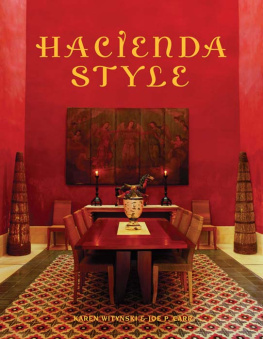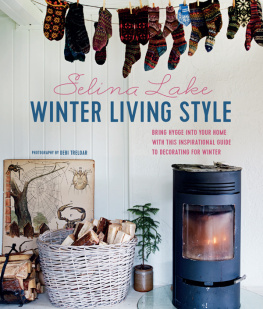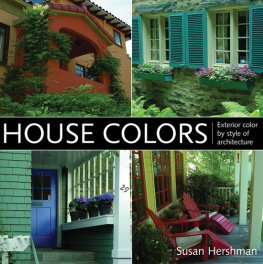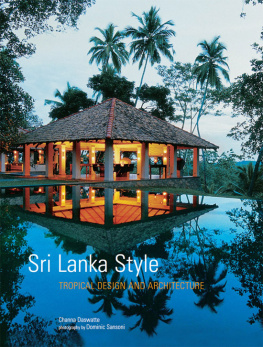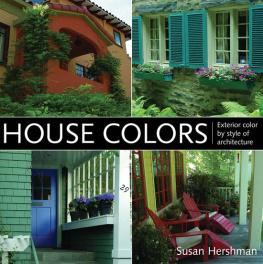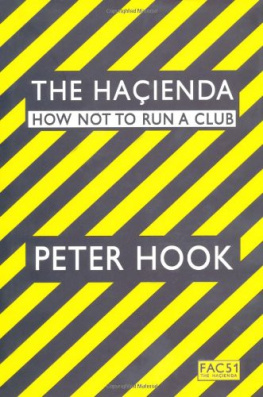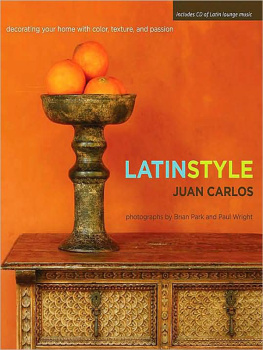Acknowledgments
Many dear people contributed generously to this book, sharing their creativity, support and enthusiasm.
We are grateful to our friends in Mexico, the homeowners, architects, designers, artists and craftsmen who have shared their knowledge and spirited hospitality over the years. Their tremendous talent and innovation were the inspiration for this volume.
A heartfelt thanks to the people who were an integral part of shaping this book. First, to my sister Amy Witynski Holmes for her help in editing the manuscript. Her masterful writing talent and enthusiasm made the word journey an enjoyable adventure. We thank our art director, Christine Nasser, for her great design talent, and most of all, her special friendship; our agent and friend Betsy Amster, for her expert advice and special support; and the Gibbs Smith team, including editors Madge Baird and Carrie Westover, for their valuable insight and continued dedication to our Mexican book series.
We acknowledge with gratitude the assistance of the Government of the State of Yucatn, the Governor, Mr. Patricio Patrn Laviada; the Secretary of Tourism, Carolina Crdenas Sosa; Public Relations Director, Ana Argez Escalante, who shared her expert knowledge; Carlos Baqueiro; and Luis Ernesto Villanueva Chac, whose assistance and creativity was invaluable to our photo shoots.
We are particularly grateful to our dear friends and colleagues, Salvador Reyes Ros and Josefina Larran who generously shared their knowledge and whose design talents so enriched this book. Additional thanks to Salvador for writing the foreword and his enthusiastic assistance with the manuscript.
We wish to express our thanks to the many friends and associates who contributed their valuable efforts to this book: Jen Lytle, who continues to inspire us with her passion for Mexico and great knowledge of colonial homes; Travis Smith for his expert technical assistance; Alvaro Ponce; Roberto Cardenas and Eduardo Cardenas; Manolo Vega; Tomas Pacheco and Ignacio Durn Encalada for their great insight and kindness.
Additional thanks to the following pioneers who lent valuable support: Roberto Hernndez, Claudia Madrazo, Marilu Hernndez, Luis Bosoms, Patricia Wohler, Luis Millet and Carlos Millet.
We would also like to thank the following people who hospitably opened their homes and haciendas to us: Dr. Hernn and Mayo Patrn, Mr. and Mrs. Leanardo Silveria Cuevas, Luis and Laura de Yturbe, Jim Neeley and David Dow, Howie and Cyndy Burger, Raymond Branham, Isabelle Kimmelman, Ed Holler and Sam Saunders, David Sterling and Keith Heitke, Daniel and Sofi Bosco, Philipe and Dominique Duneton, Fritz Menzel and Werner Gross, Arturo Sanchez, Silviane Boucher, Fiona St. Clair, George Fischer and Sam Woodruff, Joanne Andrews, Christopher Holder and Wiggie Andrews, Ron and Silvia Jackson, Deborah LaChapelle, Bob and Carole Gow, Claude and Monique Forget, Amelia Lara Tamburrino, Octavio Monsalve Uribe, Manolo and Aurora Vega, Jaime Barrera Aguilar, Ana Beatriz Parizot Wolter, Jim and Nancy Swickard.
Our gratitude to those who gave insightful advice and help, among them Dr. Luis Castaneda, Nely Argulo, Dr. Jos Yacaman, Alejandro Chan Casanova. A most sincere thank you to Roberto Girotti and Olga Rubio for their special support of the book.
Many thanks to our friends at La Misin de Fray Diego: Luis Florencia, Ruben Aguilar Massoni, Mayanin Herrera, Sonia Pasos, Manuel Valladares, Humberto Gutierrez, Eduardo Barrera.
A special note of appreciation to those special individuals who assisted us while on location, including: Rene Nieto, Tatiana Cervera, Francisco Lora Mafud, Beatriz Nino and Belen Llin, Roman Canche P., Juan Kantun Puc, Abelardo Noh Tun, Raul Narvaez and Alberto Narvaez, Pedro Nipsch. Special thanks to Luis Villanueva Chac and his wonderful family: Omar and Irene, Omar and Anita, Carlos, Roberto, Manuel, Selma and Joel for their special kindness and support.
Finally, our deep appreciation to our families for their constant support, my mother Judith M. Simpson, sisters Amy Witynski Holmes, Mara Witynski and Jenny Witynski, and brothers-in-law, Marion Holmes and Jeff Schramm. A special tribute to Joe P. Carr Sr., Joe Carr III, Michael Carr, Jim and Mary Ellen Emery, and Verne and Beverly Dwyer for their continued support.
We would like to acknowledge Continental Airlines for their support with air transportation during our research trips to Mexico.
Special thanks to La Mison de Fray Diego for providing us with wonderful accommodations and great service while in Mrida.
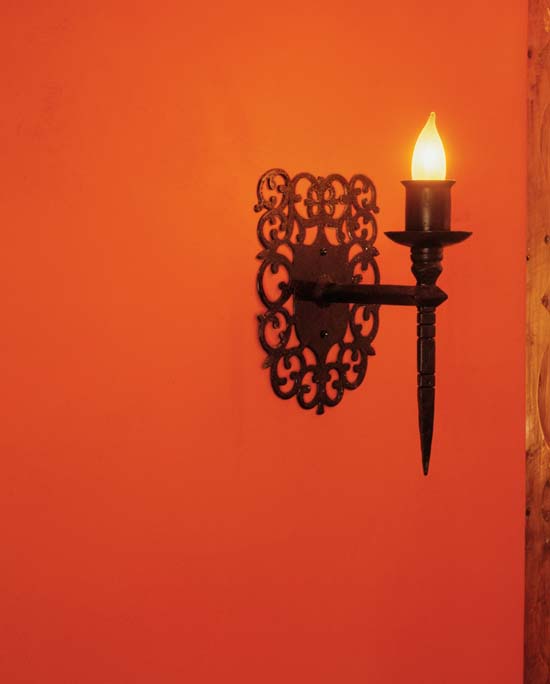
Inspired by the lockplates on old colonial trunks, this iron wall sconce features masterful ironwork. Home of the authors, Joe P. Carr and Karen Witynski, Hacienda Granada.
Foreword
For several decades and from several places in Mexico, the architecture and infrastructure of the old haciendas have become a vast fountain of inspiration and applied knowledge for architects, artists and designers. During the seventeenth to nineteenth and early twentieth centuries, the multifaceted activities in the various types of haciendas resulted in an expansive range of practical and aesthetic architectural solutions that reflect both time and the spirit of the particular site. What these buildings express is an authentic identity united with environmental, climatic, and landscape conditionsan identity born of lessons the older generation extracted from centuries of interaction with nature. This confluence marks the haciendas architectural evolution as cultural and historical places that unlock an important part of the Mexican soul.
For owners or designers, consideration of the authentic identity of a historical property is an important issue necessary before restoration or renovation, especially when the renovation introduces new uses and architectural spaces. Thus proceeding, in the midst of projecting a new spirit and personality upon it, we will be led to the path of authentic preservation of the original character of the old building.
This part of the Mexican soul needs to be understood in order to be re-created. It is more critical in the case of new residential construction which seeks to recall the hacienda style and be original at the same time. Luis Barragn and a few architects and designers have succeeded in recent years in achieving this understanding of a buildings soul.
Old buildings are frequently open books that clamor for a detailed reading. At the least, a survey and minimal historical research are the required tools to embark on a serious approach to renovation. These prerequisites will provide a heightened sensibility to the sites architectural elements and composition, as well as to the original constructive materials and construction systems. In terms of architecture and interior design, a fusion between the old and the new styles is only feasible from these bases.

